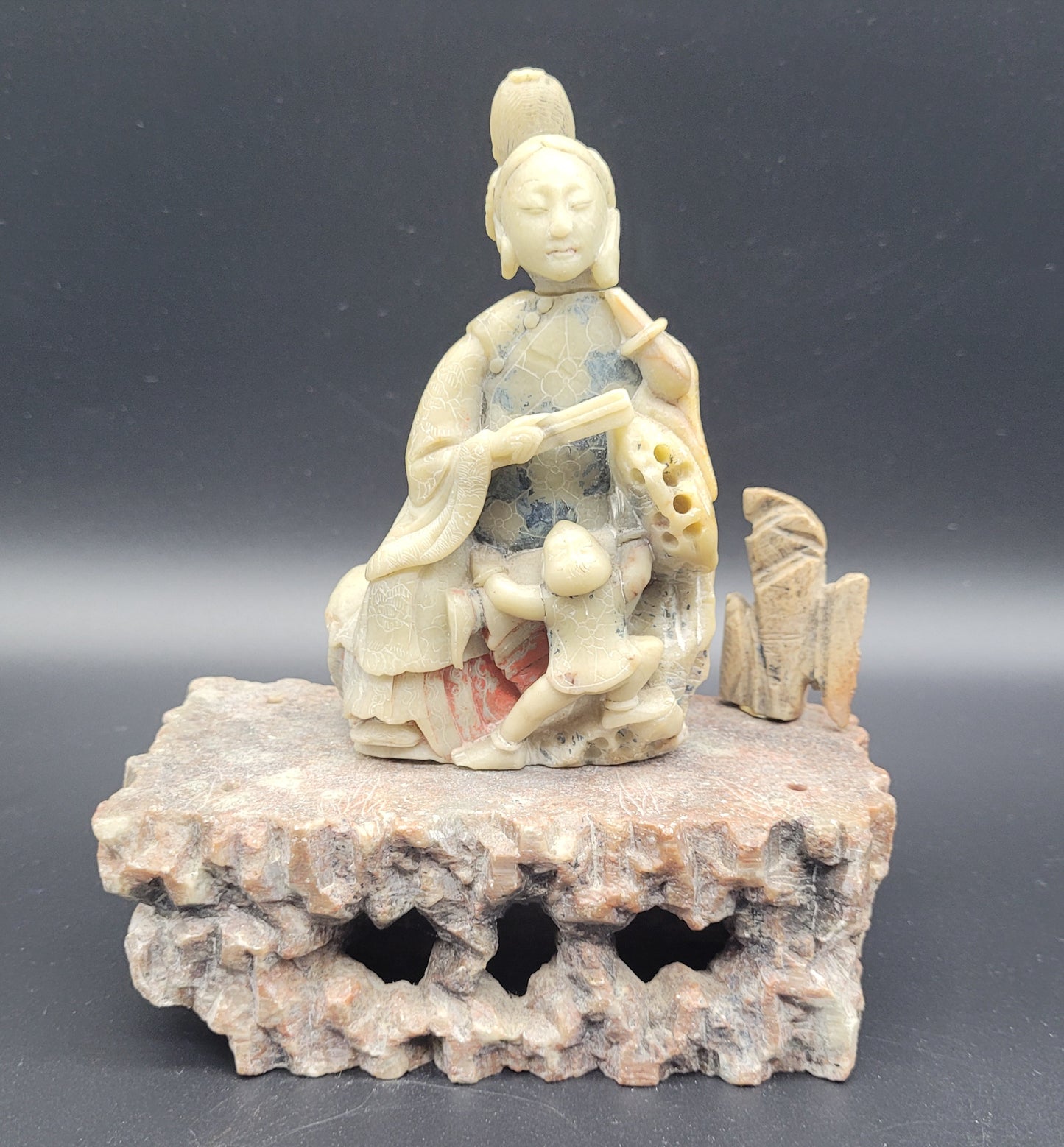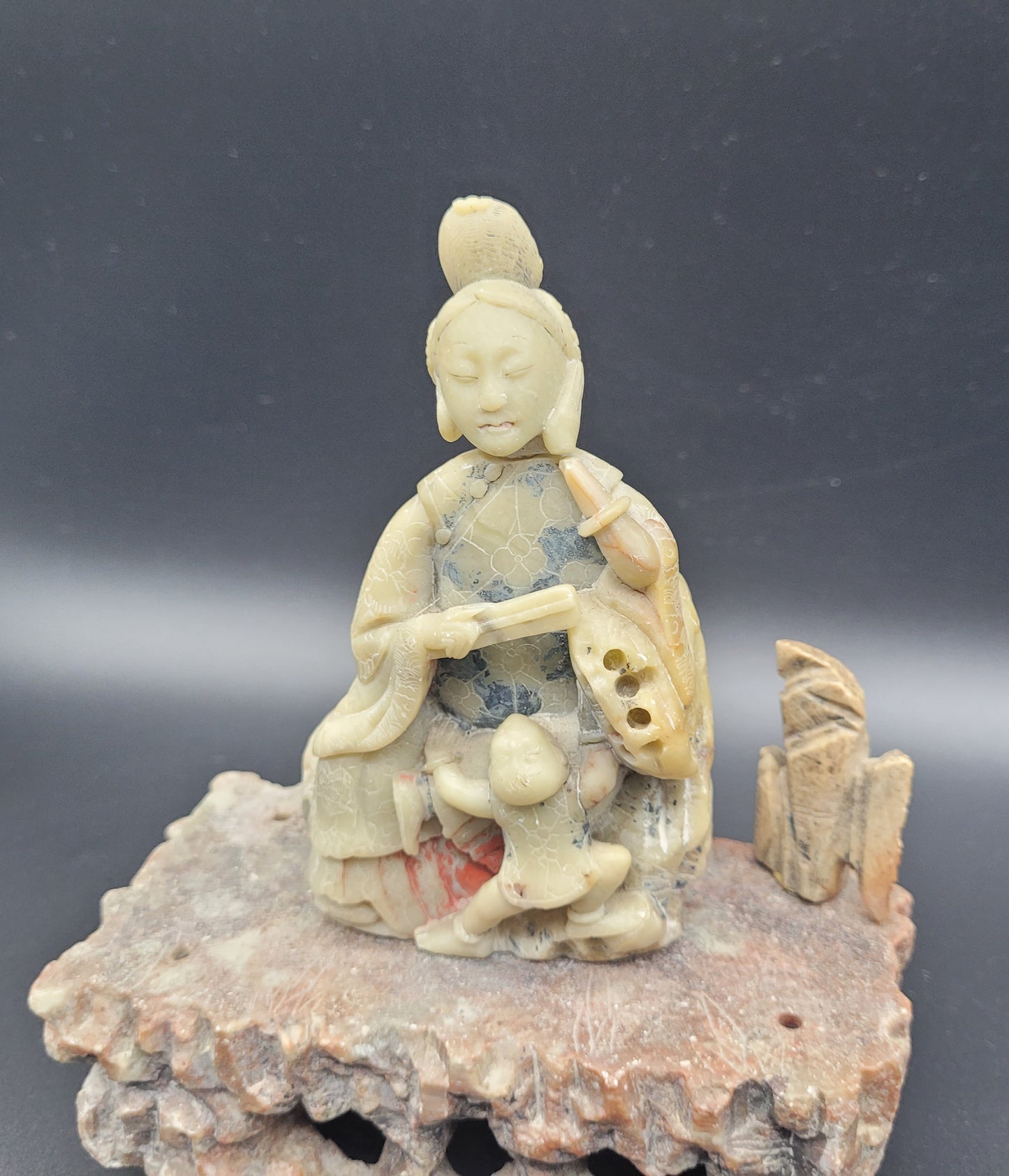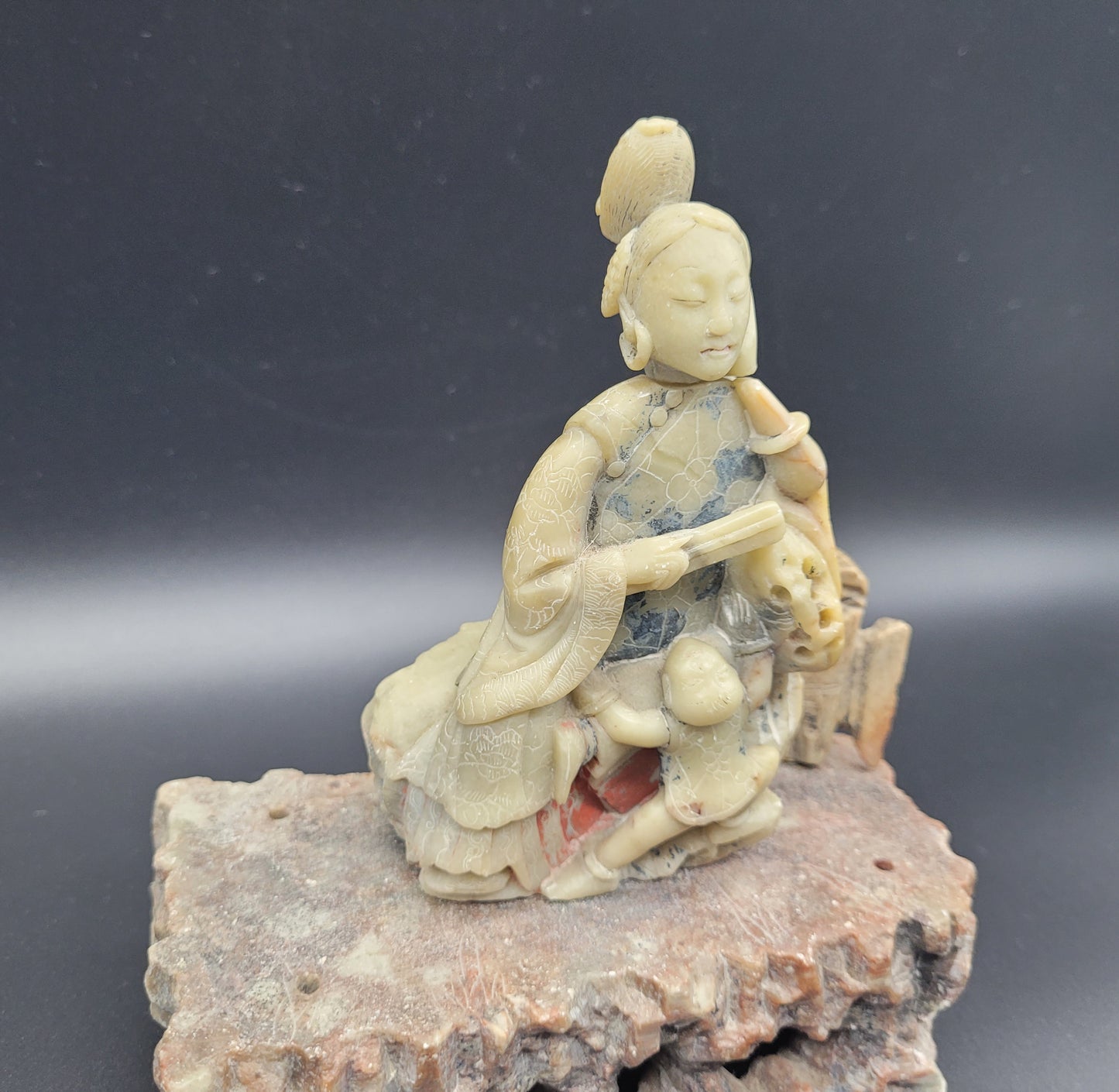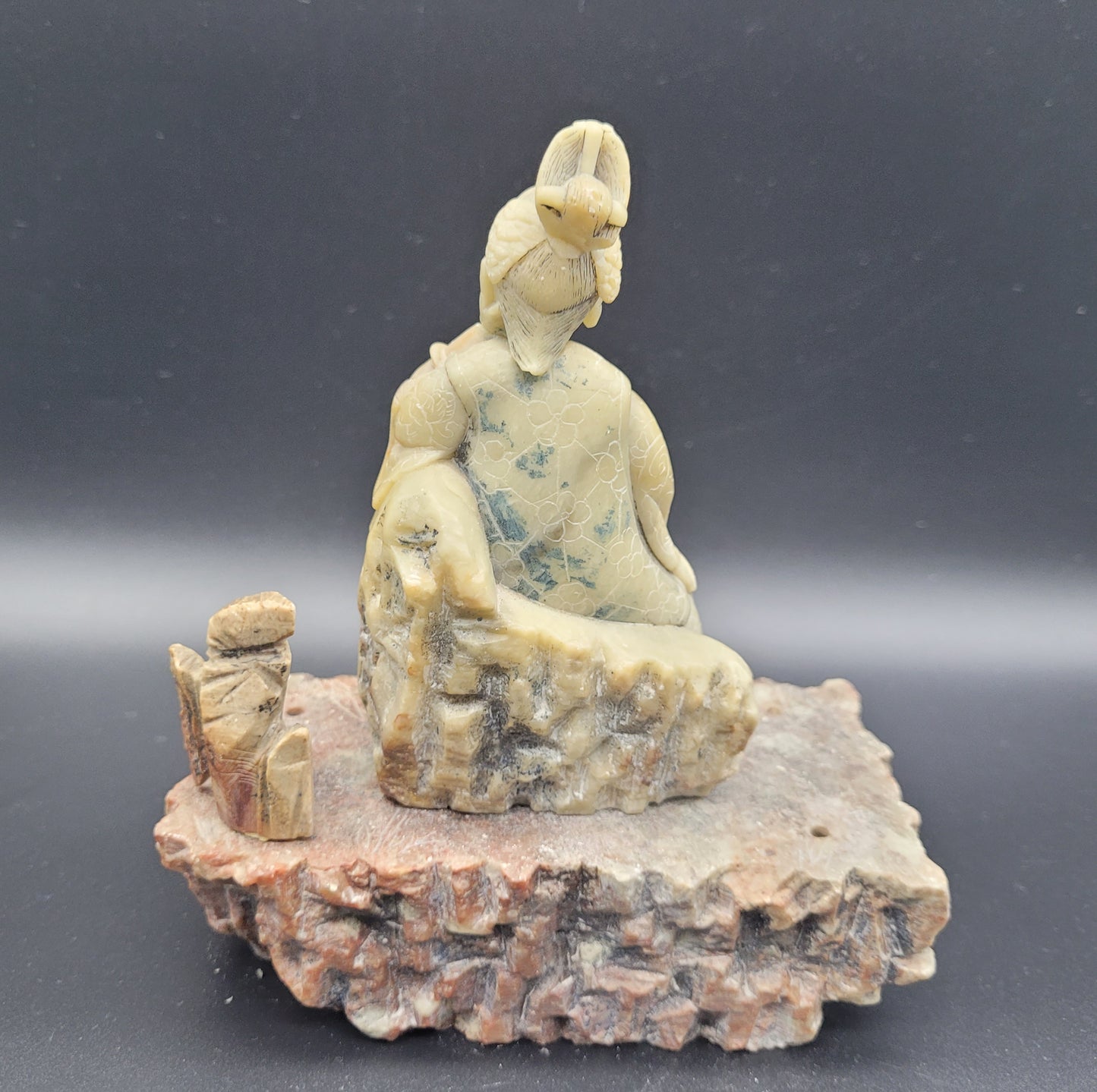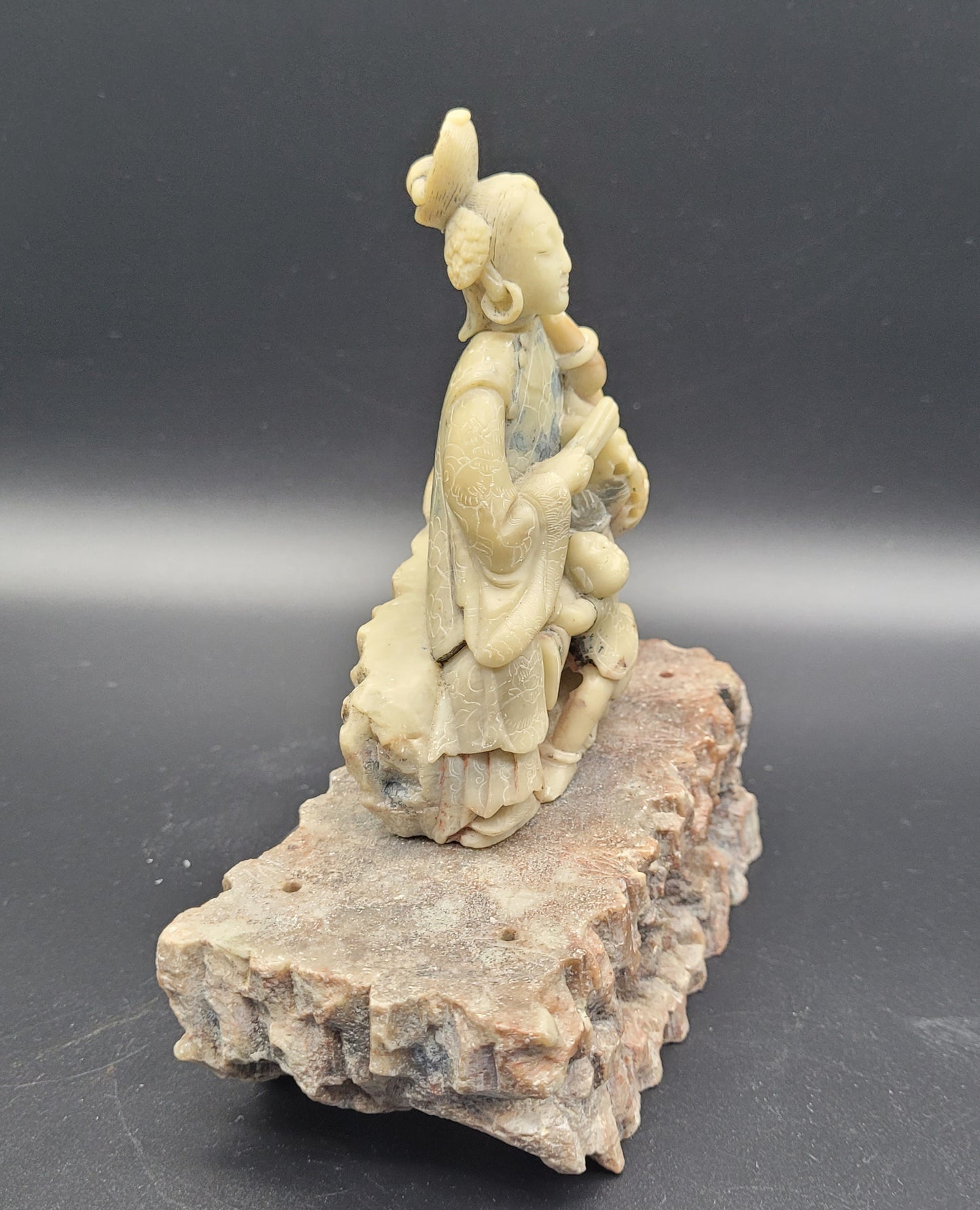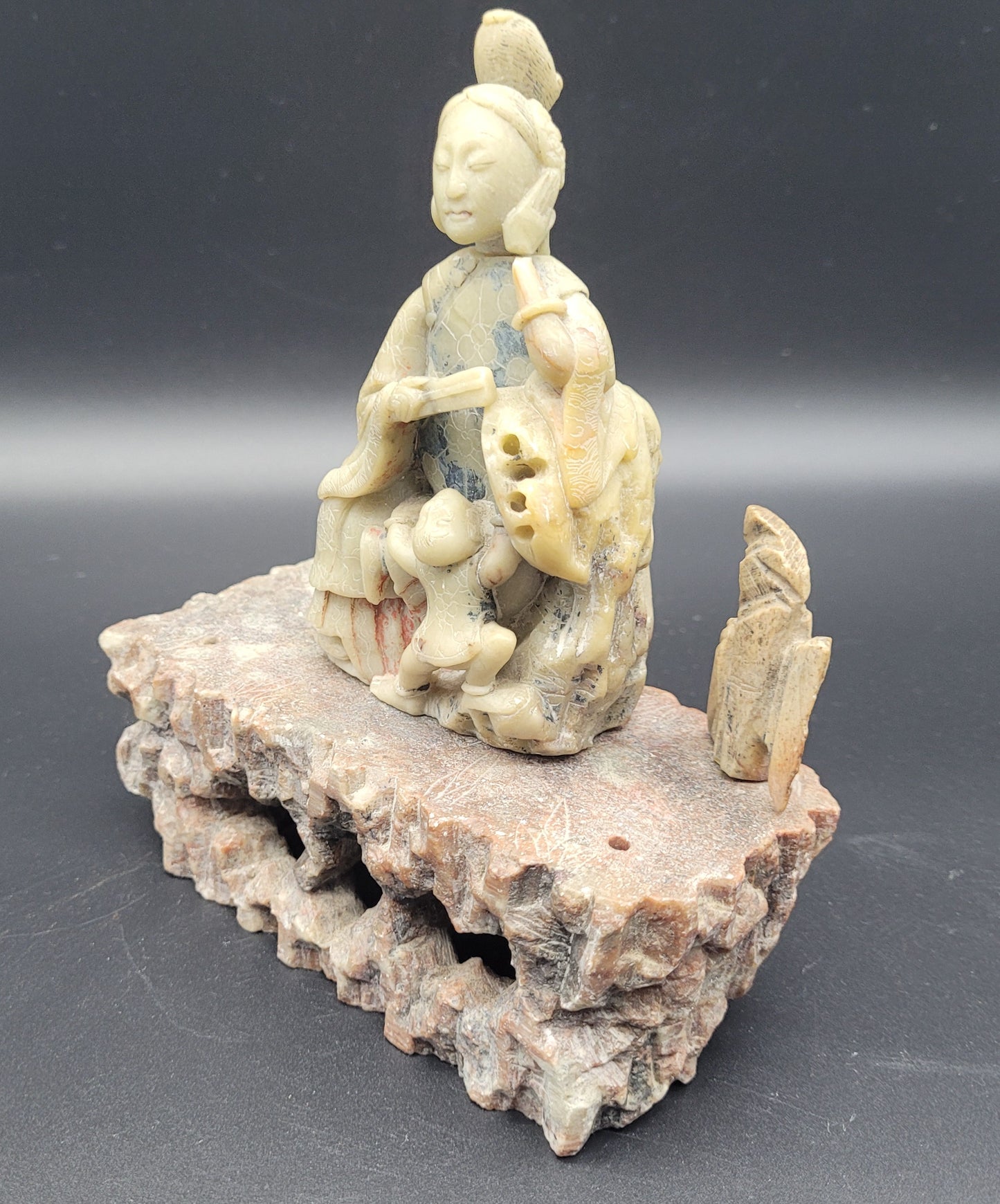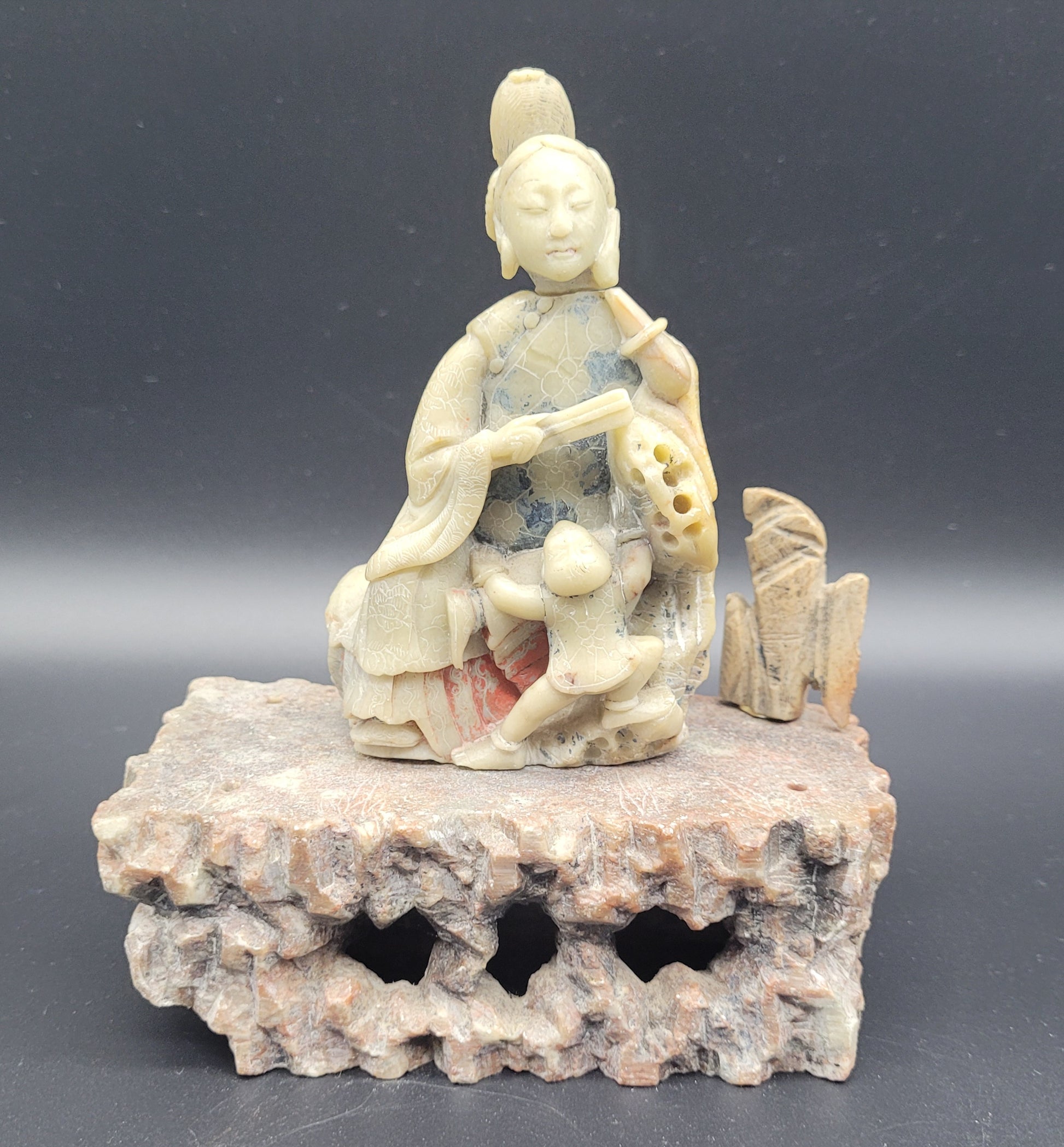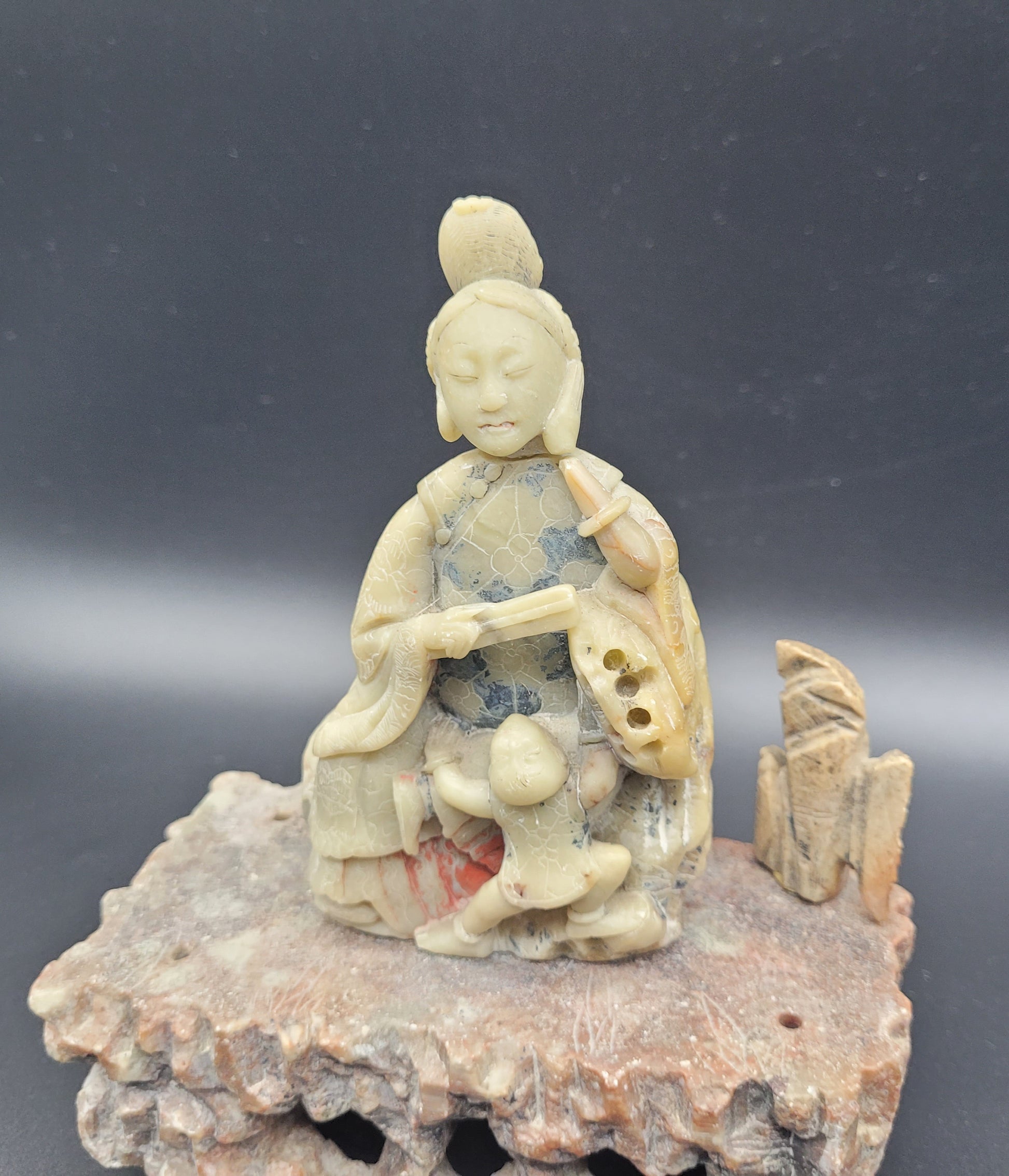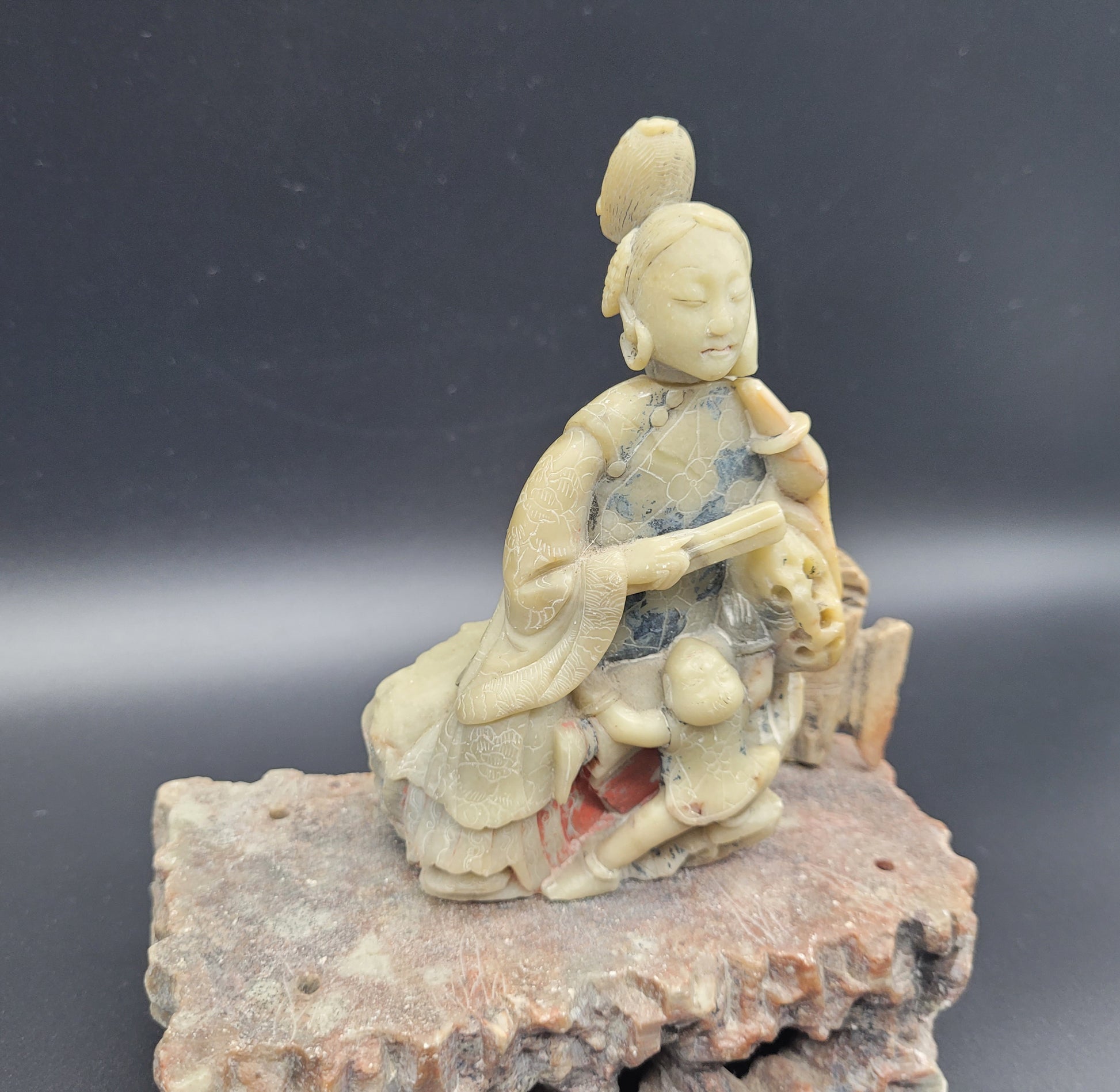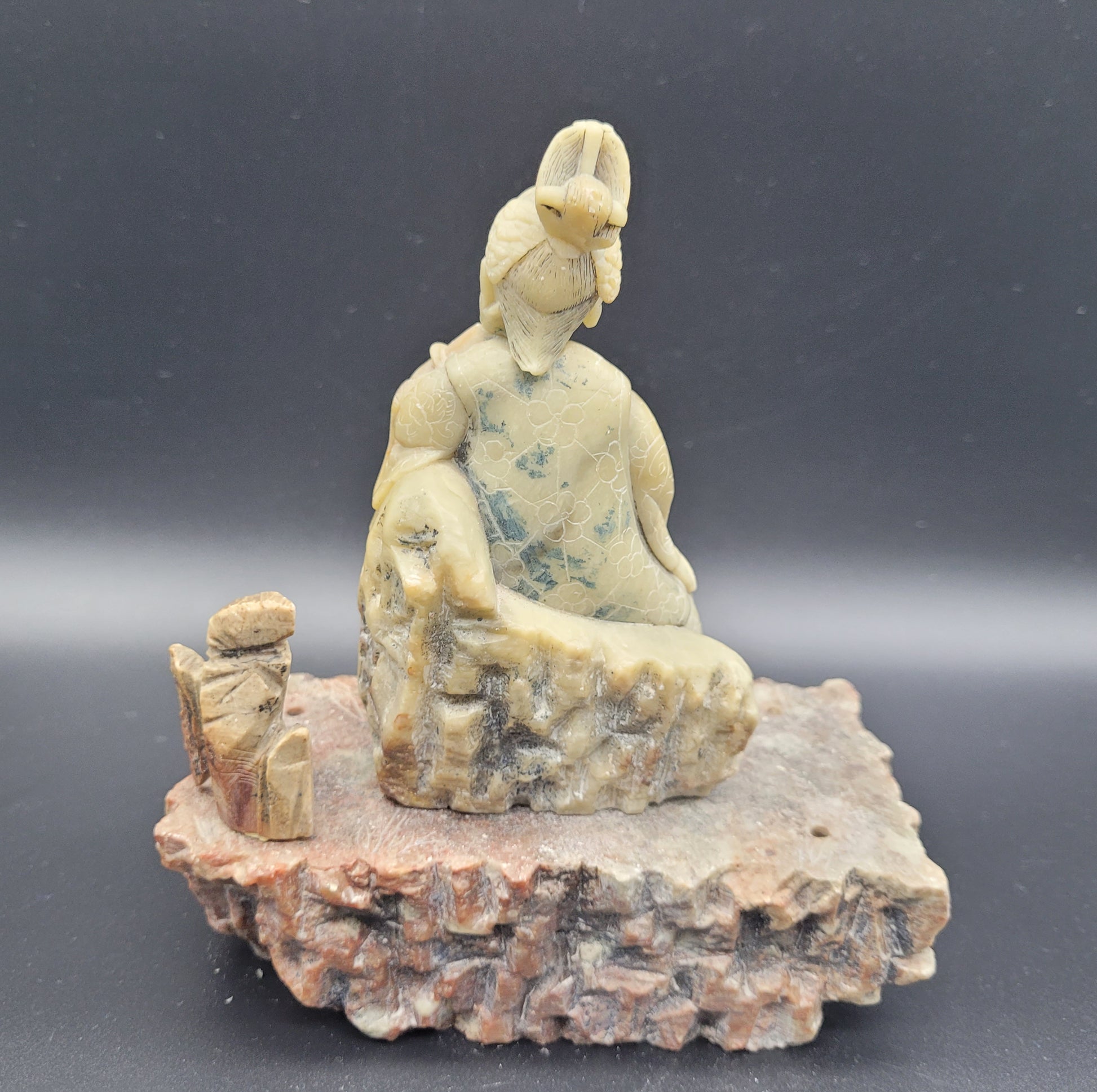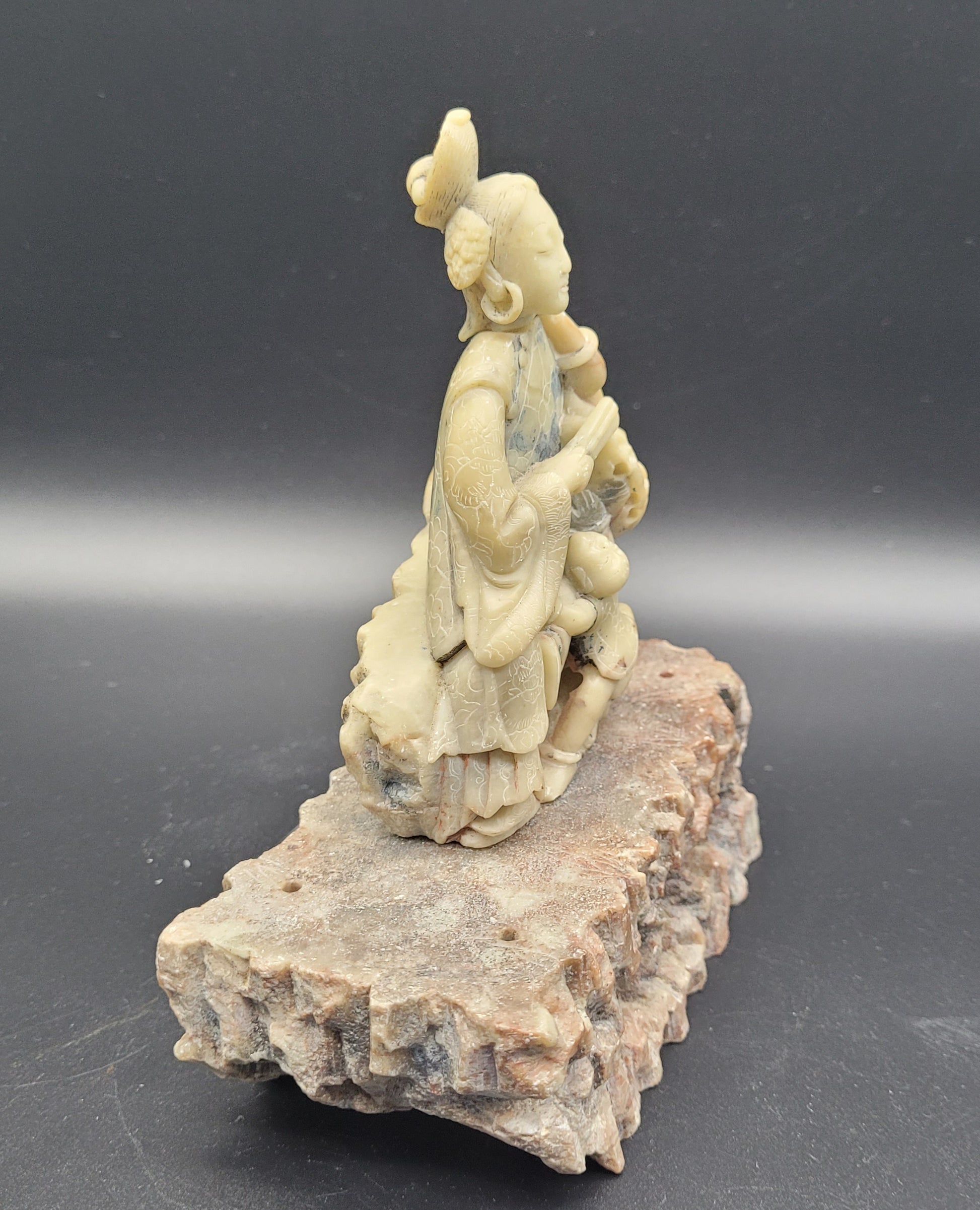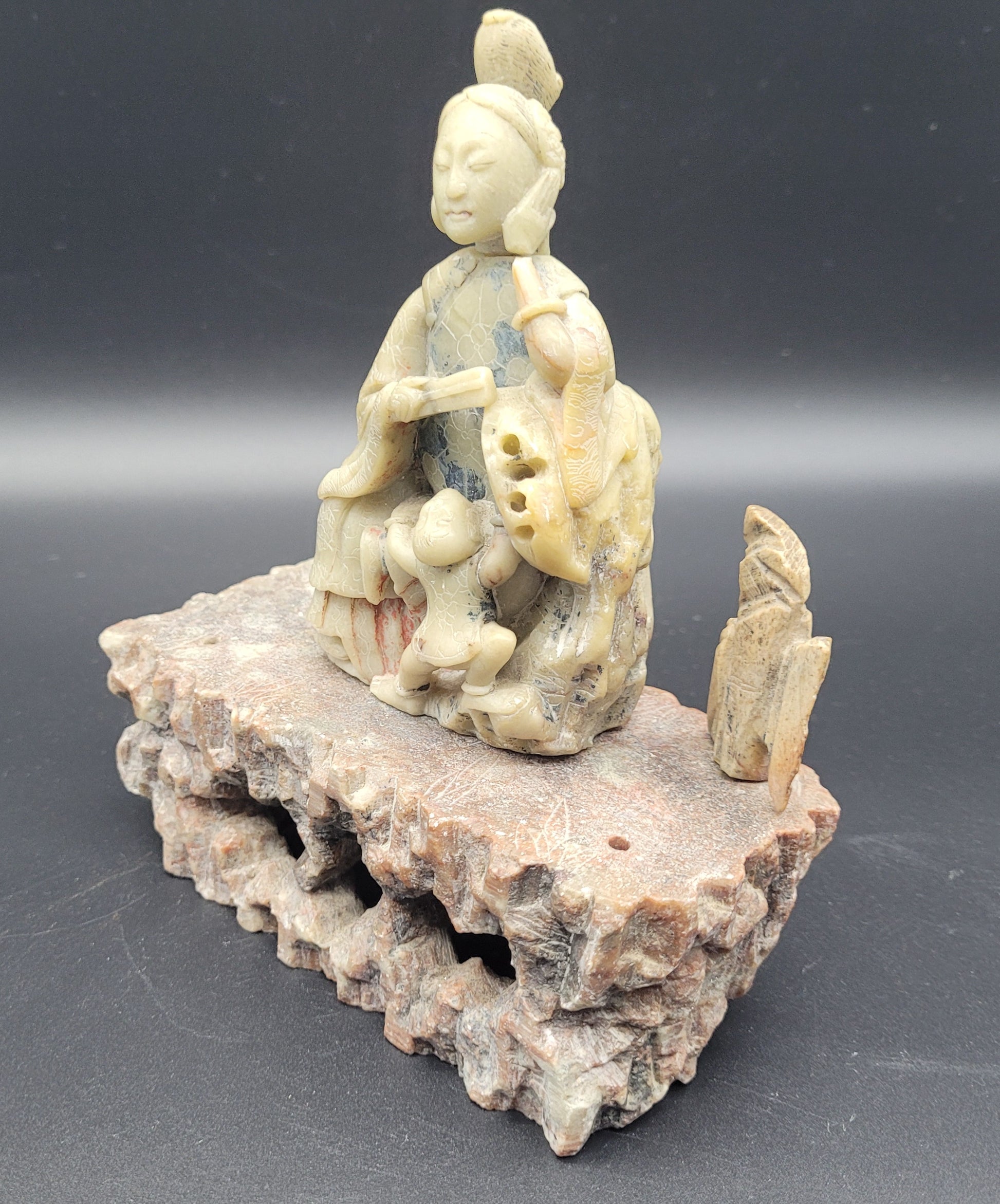Century Antiques & Jewellery
Antique Chinese Soap Stone Buddha Carving Figure 19th Century
Antique Chinese Soap Stone Buddha Carving Figure 19th Century
Couldn't load pickup availability
Antique Chinese Soap Stone Buddha Carving Figure 19th Century
Very Well Carved
Looks to have some pieces missing from the base and the head has been reattached
Height 18 cm
Width 15 cm
Any Questions Welcome.
WE SHIP WORLDWIDE !!!
The oldest identifiable Chinese soapstone sculptures are dated to more than 3000 years ago.
The Ming dynasty (1368 – 1644) saw the height of soapstone production in China. Soapstone was not only used for art it was also used to make dishes, utensils, plates, teapots and boxes.
Soapstone colour’s range from white, black, grey, purple, pink, greens, red and brown. It is a soft high talc content stone and can easily be scratched with a knife blade or even your fingernail. Soapstone varies in hardness from 1 – 5 on the Mohs scale.
The amount of talc can range from 80% (very soft) to around 30% and soapstone was used for the carving of many subjects, from Buddha to Zhong Kui. A very versatile stone.
Stones from Qingtian, currently Zhejiang province are called Qingtian stone. Carvings of the stone originated in the Kanze period of 5000 years ago. Historic Qingtian stone carvings has been unearthed in a tomb of the southern and northern dynasties period (420-581).
By the time of the Song dynasty (960-1279) artists had made use of the moderate hardness of the stone with its colours and texture to bring in the multi-layer carving techniques.
Soapstone's use dates back to antiquity: early Egyptians carved it into scarabs and seals; in China and India it was used for ornaments, implements and domestic utensils. It was similarly used at various times over the past 7,500 years by First Nations, Inuit and Norse in Canada (see Inuit Art).
Unlike painted rock art, carvings are cut into natural rock, and are rarely linked to deposits that can provide precise dates. The main way to date carved rock art is usually through stylistic comparisons (called relative dating methods).
